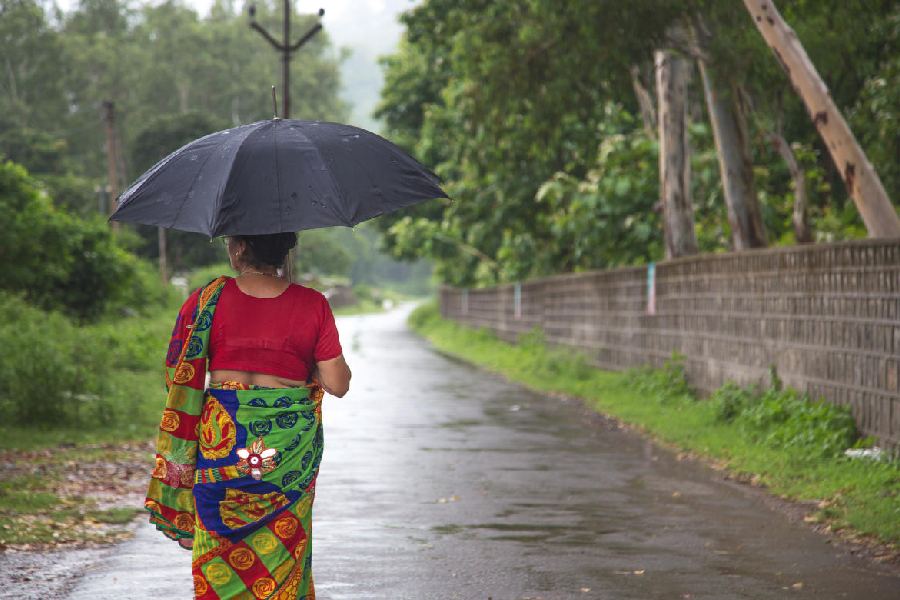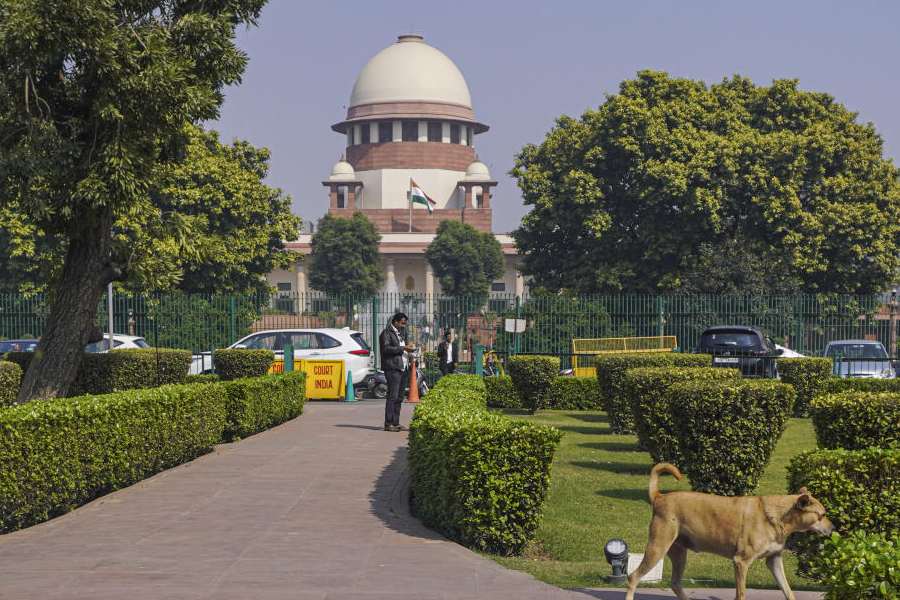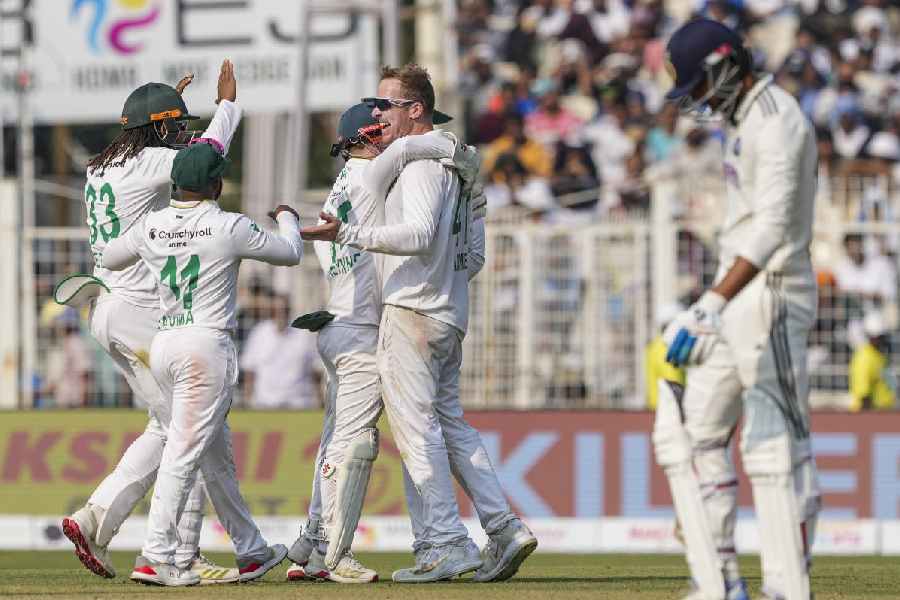Coopers Camp is the Indian subcontinent’s oldest refugee camp. Located 80 kilometres north of Calcutta, it came into being on March 11, 1950. Before that, this was where the barracks were, for soldiers of the Allied powers at the time of World War II.
Some months ago, I visited Coopers Camp with writer Joyati Maitra Kanjilal. And that is when I learnt about Golapi Datta. Joyati had got to know her, the woman she refers to as “Golapidi”, while she was researching her Bengali book Deshbhaag: Biponno Prantik Naari (Partition: Hapless Women from the Margins).
But lately, Joyati had not been in touch with Golapidi. Her phone was perennially switched off, said Joyati. Her husband, sons and daughters-in-law claimed they didn’t know of her whereabouts. After months of asking around, Joyati learnt that Golapidi had taken up the job of a cook at a bhaater hotel somewhere along NH12, close to Ranaghat. She had been thrown out of her camp home by her family. That day, Joyati was going looking for Golapidi and I was tagging along.
As we travelled through the dirt tracks in the Ranaghat hinterland, Joyati narrated to me Golapidi’s life story.
She had arrived at Coopers Camp in the mid-1960s as a 13-year-old bride. Her parents, who lived in East Pakistan, had narrowly escaped the Barisal riot of 1950. The family crossed the border with just a bundle of clothes, went to a relation’s place to begin with and thereafter to the refugee camp.
Says Joyati, “In refugee families such as theirs, the eldest daughter is destined to play the mother’s role.” Golapidi too mothered her siblings. But after her father’s untimely death, her brothers hastily got her married to a man twice her age.
At this point in Golapidi’s story, our rented car pulled up next to a roadside eatery. Trucks and buses whooshed past the desolate shack frequented mostly by truck drivers. There were half a dozen cots strewn around the entrance. It was afternoon, but some of the men were drinking country liquor. As we made our way inside, I heard someone singing a kirtan — “Banamali tumi, poro jonome hoyo Radha…” A woman’s voice singing Radha’s mournful appeal to Krishna.
Now, Joyati rushed inside; I followed. She and the singer leapt into each other’s embrace. After a long pause, the other woman said: “It has been a long time. Finally, you remembered me.”
Joyati’s Golapidi turned out to be a 70-something woman of uncommon beauty. In the course of our conversation, she quoted to us from the 7th century Bengali poet Bhusukapada; a wry couplet that said that it was her “wretched beauty” that had attracted a pack of jackals who had taken turns to feed on her.
Soon after marriage, Golapidi discovered that her husband was suffering from tuberculosis, and not physically able to earn a livelihood. Her tone is matter-of-fact and there is a smile when she says: “But he was able to force me to bear four kids in six years.” It was to feed their four children that the 20-year-old started looking for petty jobs.
Golapidi continues: “First, I tried to weave hogla mats and sell them. It was back-breaking work.”
To sell 10-15 mats at ₹6 a piece she would have to travel to the market in Neel Nagar, 7 kilometres away from home, once a week. “I would walk all the way with one of the infants at my breast,” she adds. The earnings were not enough for a family of nine. Often she had to buy groceries on credit, till came a time when shop owners started to hint that she should pay her debts with sexual favours.
Says Golapidi, “To earn a living I had worked as a farm labourer, a mason’s assistant, but eventually...”
Golapidi doesn’t remember the day she ended up in central Calcutta’s Harkata Goli, often referred to as the poor man’s red-light area. But she remembers why. Her children were growing up, they had to be fed and clothed and sent to school. Plenty of dingy rooms were available in the Sealdah area at ₹4 a day in the early 1970s. Golapidi would labour the whole day and in the evening, she took the local train back to Ranaghat.
After having worked for about two years, she became what is known as a “flying sex worker”, operating at railway stations and on streetsides. She tried her luck at Sonagachi and then travelled to Kamathipura, courtesy pimps or “agents”. Sonagachi and Kamathipura are red-light zones in Calcutta and Mumbai, respectively. But soon she started to miss her youngest, a daughter. She says, “Within a month I returned home. I had earned enough to build a house.”
By then her family was quite well off. Her husband had taken good care of the children. Relieved of her duties, Golapidi thought it was time for “prayaschitta”. She joined a group of travelling kirtaniyas. Her constant companion was Gopal, a painted clay idol of Krishna. Joyati interjects: “In Coopers Camp they used to refer to her as Gopaler Maa.”
And then one day her sons got married, brought home wives who thought it was beneath their dignity to associate with a “fallen woman” like her. Golapidi herself narrates this story.
The sun winds down, dusk envelops NH12, oil tankers and 10-wheeled trucks sputter ahead towards North Bengal, but Golapidi’s story doesn’t quite end. When we take our leave, she is already busy making anda bhurji and roti for a group of bikers and singing loudly, “Mon amar keno bandho dalan ghar... O heart of mine, why do you want to build a house of concrete...” Why indeed.










